FutuRaM involves 28 partners (associations, companies, universities) and over 100 experts from different scientific and technical fields covering six waste streams: batteries, electrical and electronic equipment, vehicles, mining; slags and ashes, and construction and demolition. Our researchers often engage in passionate conversations across their fields and most importantly about the relevance of this project. Their enthusiasm is fascinating so without further ado, meet the researchers behind FutuRaM!
Please introduce yourself both personally and professionally in a few sentences. We’d like to know a bit more about your day-to-day job, where do you live, what did you study.
Hi, I’m Danting Chen, and I come from Zhejiang Province, southeast of China but have been living in the United Kingdom for about five years now. I am currently completing my doctoral research in Civil, Environmental and Geomatic Engineering, at University College London, United Kingdom. And meanwhile, I am working as a research fellow for the Future Availability of Secondary Raw Material (FutuRaM) project. In this project, I am mainly working on the SLASH waste stream, focusing on the chemical compositions and flows and stocks of the biomass ash and lead (Pb)/zinc (Zn) slags.
How did you end up studying and working in this field?
I have been working on the chemical compositions and metal speciation of hazardous industrial wastes, including Pb/Zn slags for almost four years to this point during my PhD study . What I have learned from my PhD, corporates well with the scope of this project so I swiftly ended up working in the field itself. Besides relying on my existing knowledge and experience, the FutuRaM project is helping me extend my research areas, e.g., towards biomass. Last but not least, I have the chance to collaborate with outstanding researchers across Europe!
How would you explain your favourite research project (even if unrelated to FutuRaM) to somebody outside the scientific community? Why did it capture your attention?
My favourite research project is investigating the metal speciation (the chemical structure of metals at a molecular level) in hazardous wastes by using X-ray Absorption Spectroscopy (XAS). XAS is using synchrotron radiation* to reveal the chemical structure and oxidation states of a specific element in a complex matrix regardless of its crystallinity. It fascinatingly reveals the chemical structures of metals at a molecular level, providing more information on how to support the management of hazardous wastes in a more environmental-friendly approach.
*Synchrotron radiation can reach super high energy, and can be used to see the inner structure of solids, liquids and gas at a molecular level.
How would you capture the essence of UCL and how does your expertise and research at the university relate to FutuRaM?
UCL is one of the world’s leading multi-disciplinary universities. In Civil, Environmental and Geomatic Engineering (CEGE), we have 26 research groups, centres and sections, of which The Centre for Resource Efficiency & the Environment headed by my supervisor, Prof Julia Stegemann, focuses but not limited on use practical investigations, data analysis, and modelling to develop an improved understanding of flows of valuable resources, such as materials, water, and energy, and associated environmental impacts. I have a good understanding of Pb/Zn slags which is one of the wastes in the SLASH waste stream, covered by FutuRaM. I mainly focus on chemical compositions. The method I used in my review paper published on the elemental and mineralogical composition of metal-bearing neutralisation sludges, can be equally used for data collection in the project.
What do you find the most intriguing about this project and why?
The most fascinating thing in this project is the collaboration between 28 partners from 11 countries. Working on the development of the “Secondary Raw Materials Knowledge Base” is a big challenge while combining different expertise. I hope we can close the knowledge gap, and provide useful information for governments to manage the different waste streams by setting up proper policies as well as for industries to make full use of secondary raw materials (2RMs).
How would you simplify and explain the goal of FutuRaM to a passerby who has never heard of EU funded projects and CRMs?
The increasingly generated industrial wastes pose an environmental risk on human health, while having potential to be used as secondary raw materials in the future serving as alternative materials for the limited supply of raw materials. To apply those secondary raw materials, this project aims to understand their chemical compositions, flows, and stocks. To a better recovery of critical raw materials, this project also investigates the recovering efficient of critical raw materials, combining with the flows and stocks of the secondary raw materials.
